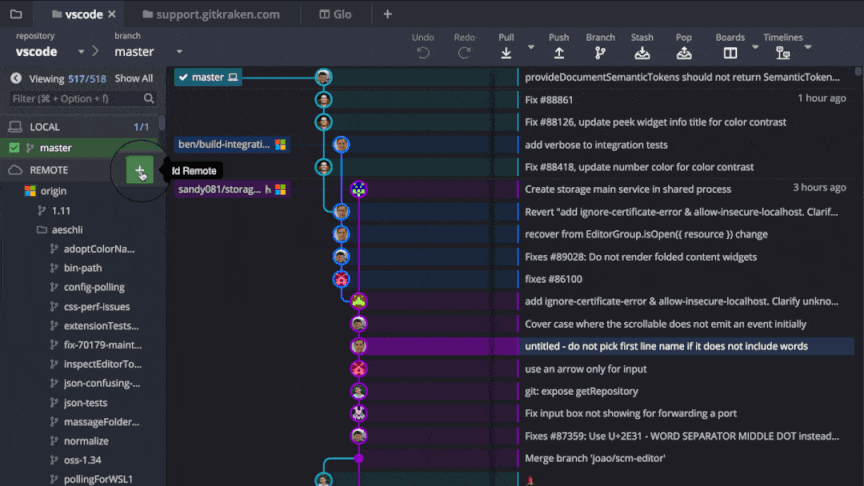Add Github remote to GitKraken
If GitHub is set with your account in GitKraken, you might need to create first an empty repo with the same name as your local repo.
That way, GitKraken can find a matching repo name in your GitHub account.
Or you could select "URL", and enter the right GitHub repo url directly there. Which is what Jim Meyer's answer confirms above.
Note that GitKraken 6.5 (January 2020) will create, then add a GitHub fork repo automatically!
Forking GitHub Repositories in GitKraken
Formerly, users were required to leave GitKraken, go to their hosting service, fork the desired repository, come back to GitKraken, find the related remote, and then find the forked repo. ð
Now, GitHub users can fork repositories directly through the GitKraken GUI, no more time wasted context switching.
v6.5 allows users the ability to fork GitHub repositories in GitKraken through the GitHub integration.
Simply navigate to the remotes pane in the left panel and click the+button to add a remote.If you don’t already have a fork on the selected GitHub repository, GitKraken will automatically present you with the fork option.
You will see the message “You have not yet forked microsoft/vscode on GitHub.”Click the
Fork and Add Remotebutton, and it will fork the repo and add it as a remote to the left panel.

Here's how it seems to work. If you have a local repo and want to connect it to github, you would use the "URL" option and put in the github address to set that as the remote repo for your local repo. The first time you do a pull or push on a local branch, it will ask which remote branch you want to use and that becomes the remote location to which you will pushing and pulling changes.
The GitHub.com option only comes into play after you have set the remote repo using the "URL" option. If there are multiple collaborators on a project and someone has created one or more forks of the project, then instead of "No Match" under the GitHub.com, you would see a list of all the forks of the project on which you are a collaborator.
You could then add the forked repos as the 2nd, 3rd, etc. remotes, and any activity on those forks would be displayed to you on the commit graph. This allows people to see what's going on in the forks, and you can drag and drop from the forked parts of the graph to create pull requests to the repo you first set up using "URL".
It's a nice feature, but the remote dialog could be labelled more clearly so that people would know the GitHub.com option was for adding forked repos to the commit graph display.
You must always use the "URL" option to add the 1st remote, and then the GitHub.com option only becomes available after that if there are forks to which you have access.